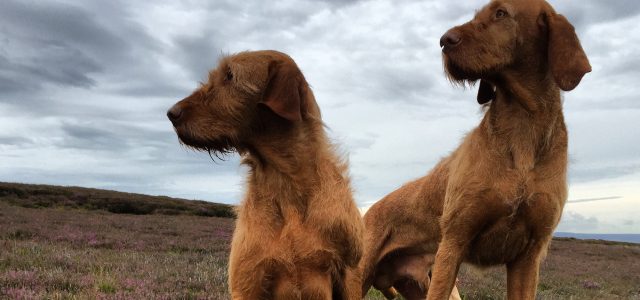
THE WORK GOES ON…
As we approach the start of the shooting season, Duncan Thomas, Regional Director of the British Association for Shooting and Conservation (BASC) North, explains how the recent hot weather has affected the grouse moors
The first rain is falling in Bowland as I write this article. Not since the droughts of 1976/7 has the area seen such prolonged, glorious and protracted sunny weather. While childhood memories of skateboarding fade, the stark reality is of a major drought in the uplands.
For most the weather has provided one of the best UK springs and summers, but for the uplands, and specifically in Bowland, the situation has been catastrophic. The fells above Slaidburn, Dunsop Bridge and across to Abbeystead were until this morning at extreme tinderbox status, the slightest spark, discarded cigarette or an old littered bottle could have caused the same disastrous fires that we have seen in the news at Saddleworth Moor and Winter Hill.
The efforts of the farmers, gamekeepers and fire fighters are to be commended as they battled these wildfires in some exceptionally challenging circumstances. Many on the ‘front line’ of these efforts have questioned the need for greater fire-breaks and a look at the way these areas are managed with a view to reducing some of the enormous fuel load carried within long rank heather.
For the gamekeeper, whose duties are to create and maintain the mosaic of incredible bio-diversity, the weather has caused great problems. The deep peat and sphagnum bogs dried out weeks ago and even the ‘pond that never dries out’ was bone dry.
It will take weeks of steady rain to re-wet the moors. Some very sensitive habitats have literally become husks and even Croasdale Beck has dried up.
Grouse that should be with broods of up to a dozen chicks have vanished and it’s doubtful whether the annual surplus will provide even just one shoot day per moor. The ‘Beast from the East’ battered the heather which the grouse need to eat in early spring. The female grouse were in poor condition as they began to ovulate and ‘clutch up’ laying hopefully approximately a dozen eggs.
The great start to the hatch all looked good with warm humid weather providing loads of insects for the chicks, but this turned into blisteringly long days and the invertebrate life literally dried up. Many if not most chicks perished.
It’s a hard fact of life that within grouse moor management, the shooting is far from guaranteed with grouse stocks now at a worryingly low level.
Most moors will not shoot this year, but the bills still have to be paid. It’s commendable that the guns (the people that shoot) will have absolutely paid their way and may not see anything in return this season.
But the work goes on, the gamekeepers will be trapping vermin and keeping the crows and foxes down so that hopefully next year the grouse will bounce back, but they are a very hardy bird and capable of enduring some real extreme weather and nature has a way of sorting itself out.
Later in the autumn and early spring, gamekeepers and farmers will perform controlled burns to both create essential firebreaks and regenerate the heather. A well-managed controlled burn will race across the damp peat burning the excess long rank heather providing a cool fast burn. These burns will spring back into vibrant, fresh, nutritious new growth in a matter of weeks and the cycle keeps going. This is vital to providing the vast range of habitats that the upland wildlife needs.
It’s not all doom and gloom this year though, at least three hen harrier nests have done well, plus peregrines, merlins and short eared owls, all fledging good broods.
Our BASC Conservation projects have done really well this year. Over a 1000 song bird boxes donated, via a gamekeepers’ luncheon at Northcote, have been placed in woodlands, many on pheasant shoots by our #youngshots. The Osprey Project in the South Lakes has produced loads of young ospreys who will soon migrate to Africa. My son Ben was one of the team that helped ring the chicks. Our #letslearnmoor scheme provided four educational days for 600 kids from 12 junior schools in North Yorkshire, where they learnt all about the wildlife on the grouse moors.
So if you see grouse on the menu this August please celebrate the great efforts that go into getting it there on the table. It’s delicious, healthy and its presence supports many jobs and livelihoods in some very remote and isolated places.

